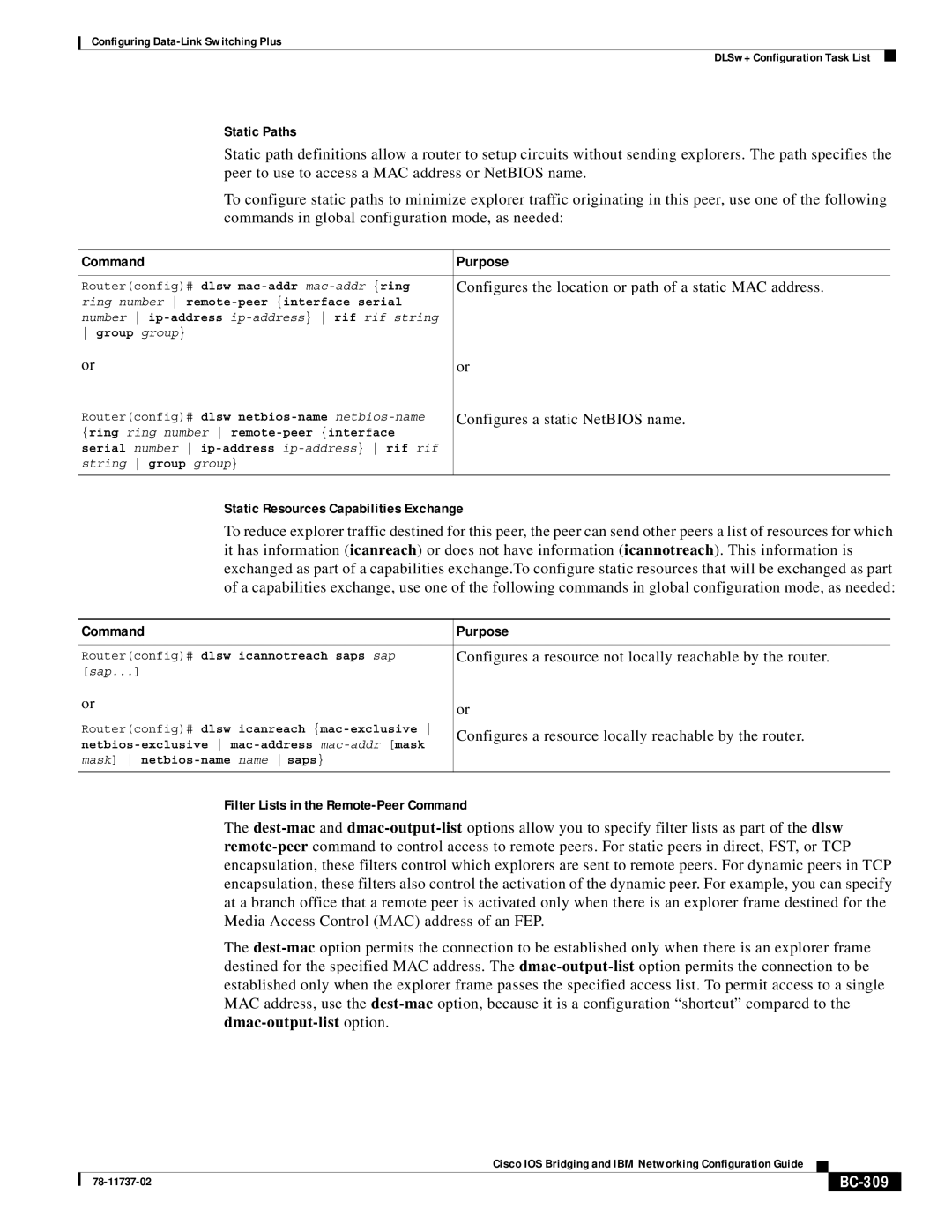Configuring
DLSw+ Configuration Task List
Static Paths
Static path definitions allow a router to setup circuits without sending explorers. The path specifies the peer to use to access a MAC address or NetBIOS name.
To configure static paths to minimize explorer traffic originating in this peer, use one of the following commands in global configuration mode, as needed:
Command | Purpose |
|
|
Router(config)# dlsw | Configures the location or path of a static MAC address. |
ring number |
|
number |
|
group group} |
|
or | or |
Router(config)# dlsw | Configures a static NetBIOS name. |
{ring ring number |
|
serial number |
|
string group group} |
|
|
|
Static Resources Capabilities Exchange
To reduce explorer traffic destined for this peer, the peer can send other peers a list of resources for which it has information (icanreach) or does not have information (icannotreach). This information is exchanged as part of a capabilities exchange.To configure static resources that will be exchanged as part of a capabilities exchange, use one of the following commands in global configuration mode, as needed:
Command | Purpose | |
|
| |
Router(config)# dlsw icannotreach saps sap | Configures a resource not locally reachable by the router. | |
[sap...] |
| |
or | or | |
| ||
Router(config)# dlsw icanreach | Configures a resource locally reachable by the router. | |
| ||
mask] |
| |
|
|
Filter Lists in the Remote-Peer Command
The
The
|
| Cisco IOS Bridging and IBM Networking Configuration Guide |
|
|
|
|
|
| |||
|
|
|
|
| |
|
|
|
|
